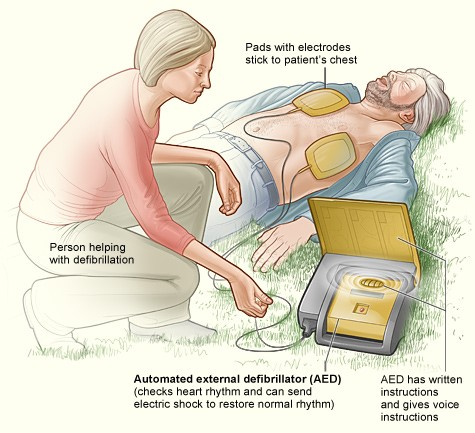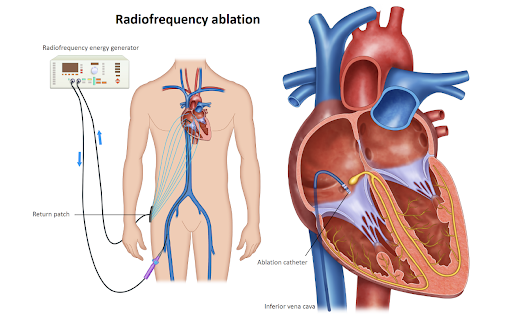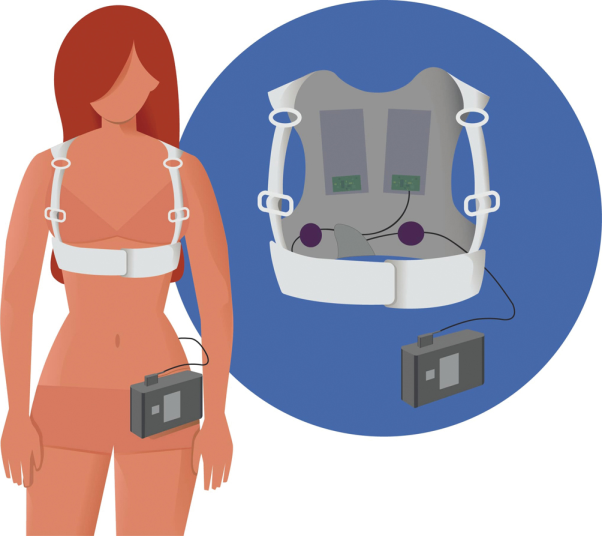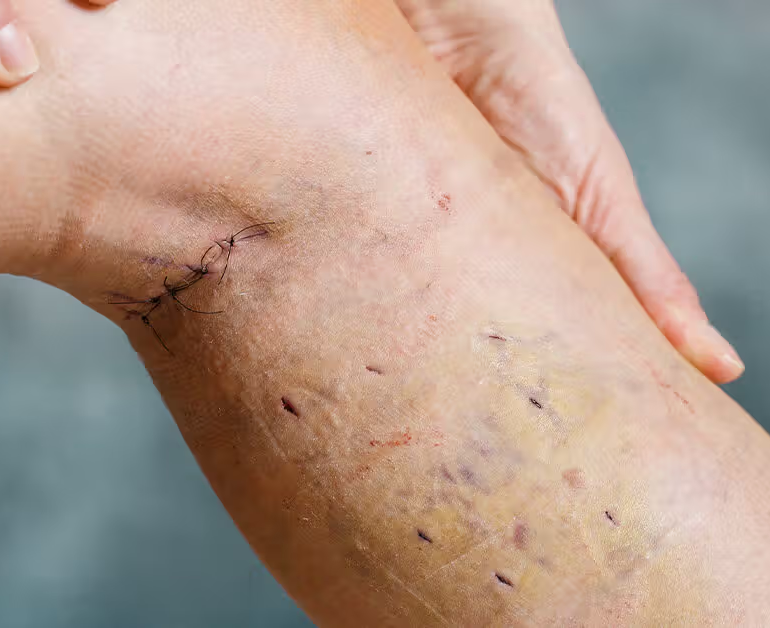An automated external defibrillator (AED) is a portable electronic device used to treat sudden cardiac arrest (SCA) by delivering an electrical shock to restore normal heart rhythm. AEDs are designed to be user-friendly and can be used by laypersons or trained individuals in emergency situations to provide immediate treatment to someone experiencing SCA.
Components
An AED typically consists of the following components:- Main Unit: The main unit of the AED contains the electronic circuitry, battery, and user interface. It is equipped with controls and visual prompts to guide the user through the defibrillation process.
- Pads or Electrodes: Pads or electrodes are attached to the patient’s chest to deliver the electrical shock. They contain sensors that analyze the heart’s rhythm and determine whether defibrillation is needed.
- Speaker and Visual Display: The AED includes a speaker to provide voice prompts and audible instructions to the user. It also features a visual display that shows graphical instructions and prompts
Function
The AED functions by:- Analyzing the heart’s rhythm through the electrodes attached to the patient’s chest.
- Determining whether the rhythm is shockable (ventricular fibrillation or pulseless ventricular tachycardia) or non-shockable (asystole or pulseless electrical activity).
- Prompting the user to deliver a shock if a shockable rhythm is detected.
- Guiding the user through the defibrillation process with voice prompts and visual instructions.
- Automatically charging and delivering a controlled electrical shock to the heart to restore normal sinus rhythm.
Indications
AEDs are indicated for use in cases of sudden cardiac arrest (SCA) caused by ventricular fibrillation (VF) or pulseless ventricular tachycardia (VT). SCA is a life-threatening condition in which the heart suddenly stops beating effectively, leading to loss of consciousness and cessation of circulation. AEDs are used to rapidly diagnose and treat SCA by delivering an electrical shock to restore normal heart rhythm and improve the chances of survival.Use
The use of an AED involves the following steps:- Assessment: Assess the patient’s responsiveness and breathing. If the patient is unresponsive and not breathing normally, begin cardiopulmonary resuscitation (CPR) immediately.
- Activate Emergency Response: Call for emergency medical assistance (EMS) and request an AED.
- Prepare the AED: Turn on the AED and follow the visual and audible prompts to prepare the device for use.
- Attach Electrodes: Attach the electrode pads to the patient’s bare chest as indicated by the visual prompts. Ensure that the pads are firmly in place and do not overlap with each other or medical devices (e.g., pacemaker).
- Analyze Rhythm: Allow the AED to analyze the patient’s heart rhythm. Stand clear of the patient and avoid touching them during rhythm analysis.
- Deliver Shock: If a shockable rhythm (VF or pulseless VT) is detected, the AED will prompt the user to deliver a shock by pressing the shock button. Ensure that no one is touching the patient before delivering the shock.
- Perform CPR: Immediately resume CPR after delivering the shock. Continue CPR cycles of chest compressions and rescue breaths until EMS arrives or the patient shows signs of recovery.
Safety Features
AEDs are equipped with safety features to ensure the safety of both the rescuer and the patient, including:- Automated rhythm analysis to determine whether a shockable rhythm is present.
- Voice and visual prompts to guide the user through each step of the defibrillation process.
- Automated detection of movement or interference to prevent accidental shocks.
- Low-energy biphasic waveform technology to deliver a safe and effective shock.




